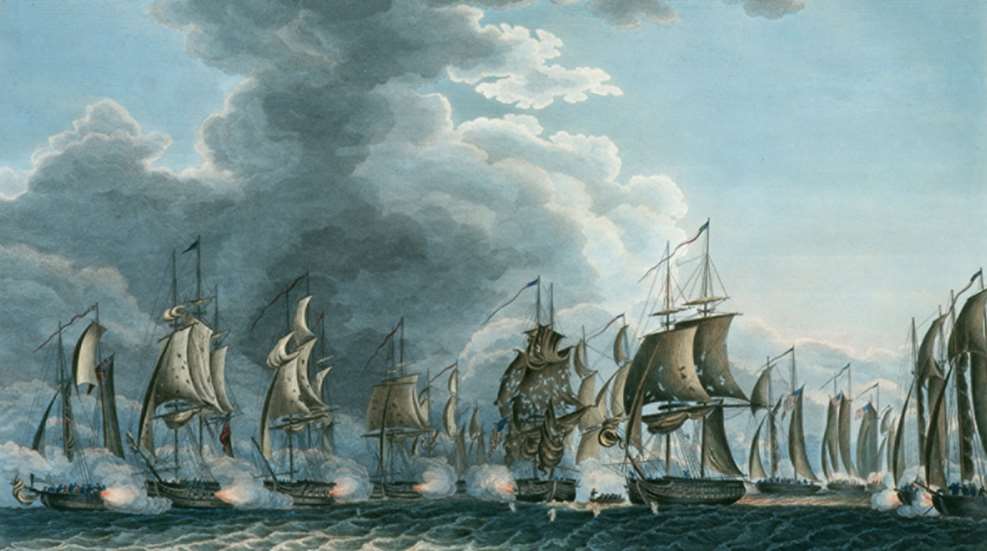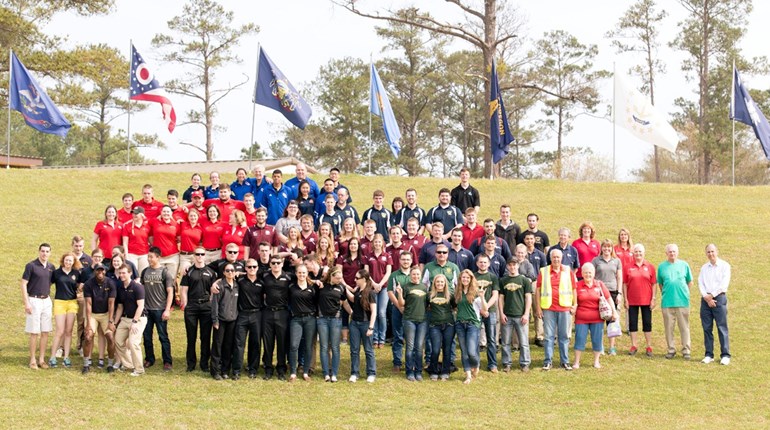
What today are some of the best fishing grounds in the Midwest for walleye, perch and bass were once battlegrounds. The Battle of Lake Erie was fought on the western waters of the Great Lake on September 10, 1813. A David-versus-Goliath confrontation, the encounter pitted the fledgling United States Navy against mighty British warships. The outcome of the battle would change the course of American history.
It was the War of 1812—during the era of sailing ships—and commanding the nine-vessel American fleet was Master Commandant Oliver Hazard Perry, just 28 years old. The British, commanded by one-armed Commodore Robert Heriot Barclay, had six warships but more firepower: a total of 63 cannons compared to the Americans’ 54.
The British guns could also shoot further, up to a mile. However, the American cannons, known as carronades, were more devastating at close range. To have a chance at victory, Perry knew he would have to get his ships close before opening fire.
Naval engagements of the time were much more dangerous for the combatants than were land battles, for two reasons. First of all, warships of the period were small compared to today’s battleships; as a result, the crews were crammed into tight quarters. Secondly, the ships were constructed of wood, meaning that when a cannonball hit, deadly splinters of all sizes flew in every direction, inflicting hideous injuries. It was common practice before a naval battle for crews to spread sand upon the decks to absorb the blood during the carnage they knew was coming; it made for surer footing.
The lake breeze was light that late-summer day, the ships jockeying for position all morning before beginning a slow-motion battle that didn’t begin until nearly noon. To signal his ships to begin the attack, Perry hoisted a new dark-blue flag with white lettering that read: DON’T GIVE UP THE SHIP.
With the wind at her back, the British ship Detroit began firing first, and within five minutes connected with a 24-pound cannonball that tore through the side of Perry’s flagship Lawrence. The Detroit continued to pound the Lawrence at a distance for the next two and a half hours, killing or wounding 83 of her 103-man crew and silencing every gun.
On the American ships trailing the Lawrence things were little better. The Scorpion, for instance, had one of its two guns blown down the hatch, killing several of the crew. And on the Ariel a cannon had exploded with devastating effects. It was at this point that all seemed lost for the Americans.
But Perry was not finished fighting. Ordering a rowboat lowered, he had four uninjured sailors transfer him from the Lawrence—now completely dead in the water, her sails and rigging in tatters—to the Niagara. And it was at that time the wind began to change direction, some say providentially. With the breeze now at their backs, the American ships had the advantage.
Perry quickly maneuvered the Niagara in close to the Detroit and other British vessels, pounding them with shot after shot from the carronades. Sailors on the other eight American ships did likewise, while also raking the British decks with small-arms fire from pistols and rifles.
Within only a short time it was over. All the British commanding officers and their seconds were either dead or severely wounded. Barclay, also severely wounded, ordered the British battle flags lowered, surrendering what was left of his fleet.
Soon after the battle Perry scrawled a terse note on the back of an envelope to his commanding officer William Henry Harrison, who would one day become the ninth president of the United States.
Dear General: We have met the enemy and they are ours—two ships, two brigs, one schooner and a sloop. Yours, with great respect and esteem, Oliver Hazard Perry.
The Battle of Lake Erie proved to be one of the greatest American victories of the War of 1812. Perry’s victory secured control of the lake, forcing the British to retreat up the Thames River, farther into Canada. General Harrison and the American army doggedly pursued, defeating the small British army and its allied Indian force on October 5, 1813 at the Battle of the Thames. (By the way, it was the same battle where the great Shawnee Indian leader Tecumseh was killed.)
Oliver Hazard Perry certainly did not win the Battle of Lake Erie single-handed, but without his courageous leadership the result of the fight could have been very different. Unfortunately, Perry died six years later on his 34th birthday after contracting yellow fever.
Commemorating the Battle of Lake Erie today is Perry’s Victory and International Peace Memorial located on Lake Erie’s South Bass Island and operated by the National Park Service. Beneath the 352-foot Doric stone column lie the remains of three American and three British officers killed during the battle. The monument celebrates the long-lasting peace that has endured among Great Britain, Canada and the United States since that bloody day more than two centuries ago.
Highly recommended during a visit to the memorial is the quick elevator ride to the top of the monument where an open-air observation deck provides a spectacular view of all the Lake Erie islands. The village of Put-In-Bay is immediately below, surrounding the harbor where Perry prepared his ships for the fight.
Fun Fact:
Lastly, here’s a bit of naval history trivia you can use to impress your friends. Most people have heard the saying: "It’s cold enough to freeze the balls off a brass monkey!" But the term does not refer to what you may think.
During the days of sail, warships mostly fired round iron cannonballs; the balls were stacked on deck in a pyramid shape. To keep the bottom cannonballs in the pyramid from rolling, they were placed on a metal plate with round indentations known as a “monkey.” But if the monkey was made of iron, the cannonballs soon rusted fast to it.
So instead, the monkey was made of brass. The only problem with this solution is that when brass gets cold it contracts more than iron. Brass shrinks so much, in fact, that the indentations in the monkey can no longer hold the iron cannonballs and they roll off. Hence the term, cold enough to freeze the balls off a brass monkey. (And you always thought, well…)






































